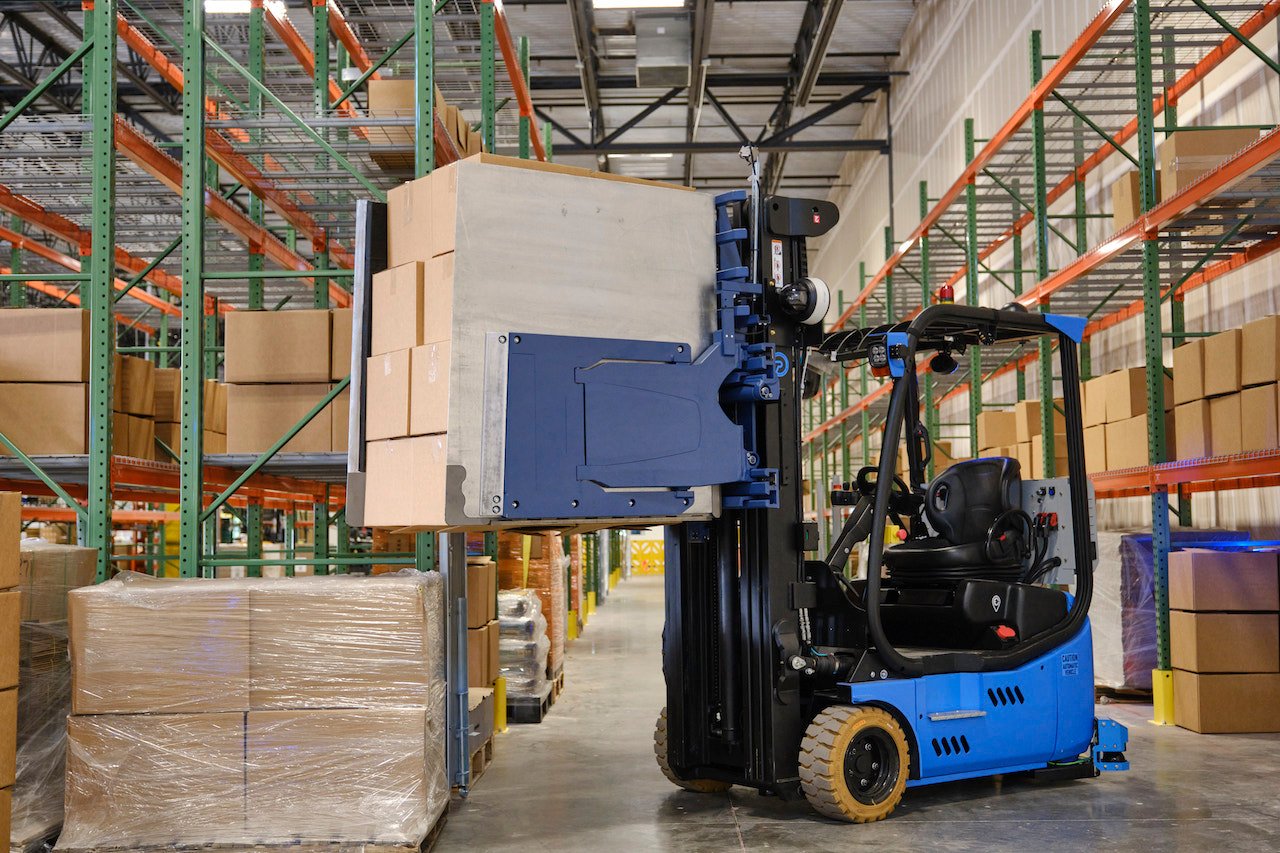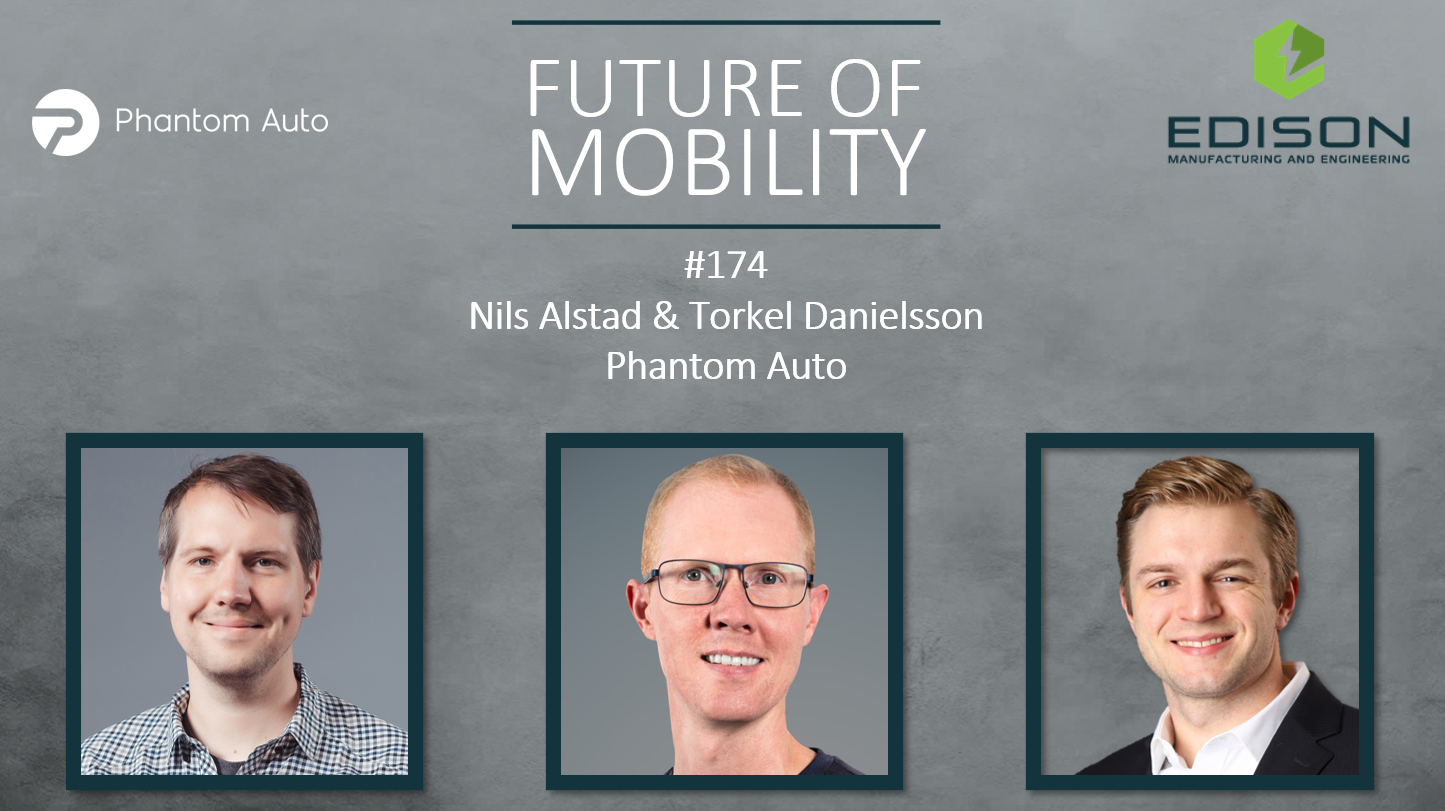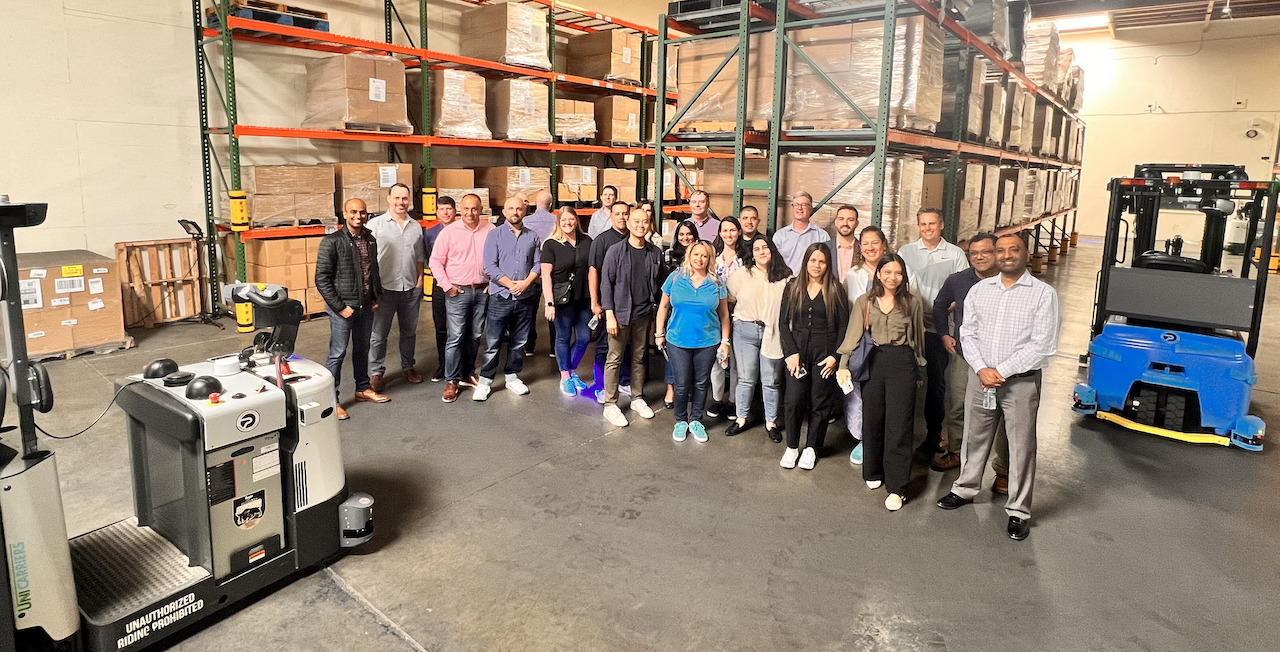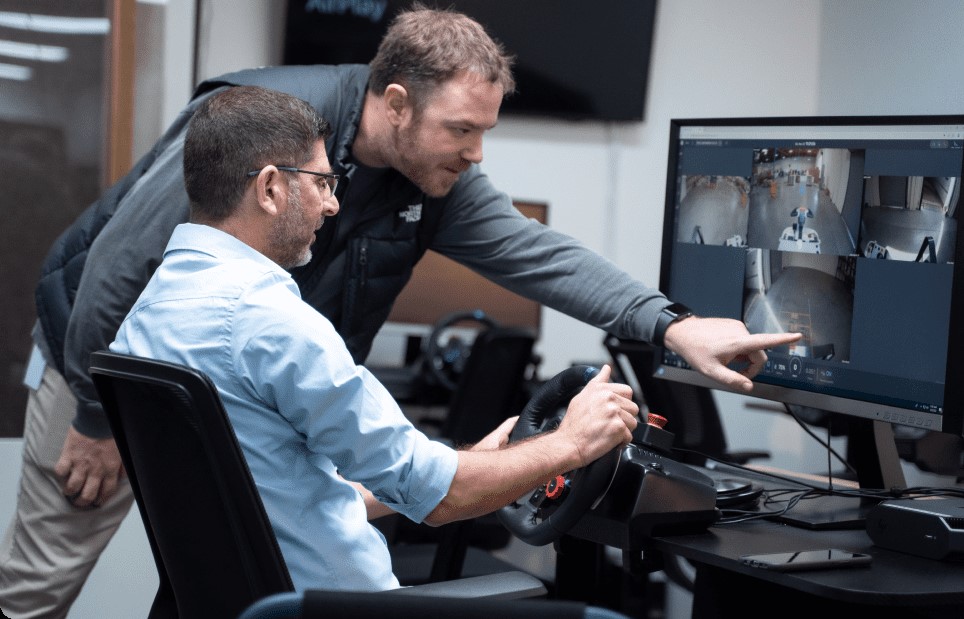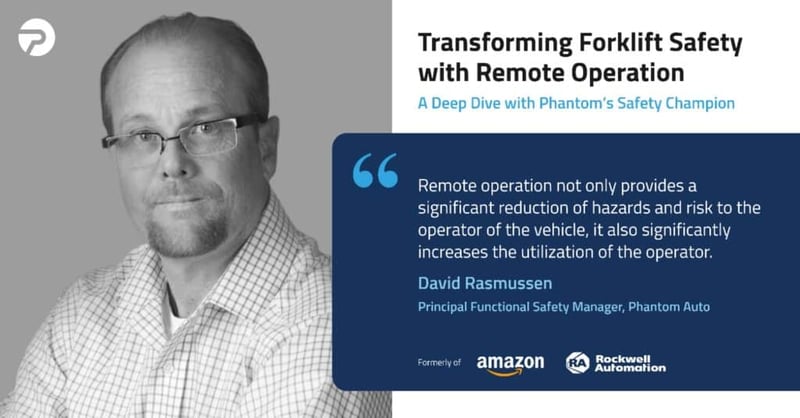
A Q&A with Phantom Auto's Safety Champion, David Rasmussen
At Phantom Auto, safety is our top priority. To ensure our products are designed, developed, and deployed in the safest possible manner, we recruit industry leaders in the highly respected fields of functional safety and robotics.
Phantom’s safety team is led by Amazon and Rockwell Automation-veteran David Rasmussen, who was hired in 2022 to lead safety and compliance efforts. As a leading voice in industrial automation, Rasmussen has helped shape industry standards for over four decades, and steered safety and compliance committees for the American National Standards Institute and related regulatory and compliance agencies.
We sat down with Rasmussen to ask some questions about his background, the importance of safety standards in the logistics industry, the opportunity to develop new standards for the burgeoning field of remote operation, and why a layered safety approach is critical to scaling the use of technology in the material handling industry.
What is your background in industrial automation?
David: I’ve been involved in the industrial automation area for 40 plus years, starting with the Allen-Bradley Company back in 1977. Allen-Bradley transitioned to Rockwell Automation, which is a very well known automation provider. I was with them for a little bit over 40 years.
Then Amazon came knocking, because I had performed all of their functional safety engineering certification classes for their functional safety engineers. They gave me an opportunity to work with a startup that they purchased by the name of Canvas Technologies, which was on the verge of designing and producing an autonomous mobile robot.
When I started with Amazon, there really were no standards around autonomous mobile platforms or autonomous mobile robots. It was kind of a new area. Since that point in time, several standards have been developed around that technology.
I sit on several standards committees, including the autonomous mobile robot standard and other related functional safety standards committees.
How did you arrive at Phantom Auto?
David: I was given an opportunity to come and work for Phantom Auto and focus primarily on mobile platforms, including forklifts. One of the great interests that brought me to Phantom was the simple fact that it was a brand new technology.
In your experience, how are AGVs and AMRs limited in the warehouse?
David: When I first got involved with autonomy, literally I thought I was going to solve the world's problems with autonomous mobility and autonomous mobile robots. But the problem is, they do a lot of great things in very unrestricted and non-dynamic environments. They're really good at driving from point A to point B.
The problem in deploying fully autonomous solutions into warehouses is the extremely dynamic nature of what those environments present. It causes fits for a lot of autonomous products that have to do path planning to navigate their way.
In industrial environments like fulfillment centers or warehouses, the map itself is constantly changing. The environment is constantly changing and the tasks these pieces of equipment need to do are fairly complex.
What can Phantom do now that AGVs and AMRs can’t?
David: An AGV is a path follower. In other words, it has a predefined path, always following the same road. But when the AGV gets to its point A or point B, we want it to continue to do work. The work that it has to do once it reaches its destination is usually far more complex than what we can design today. Those types of tasks at point A and point B today are not easily accomplished by fully autonomous or automatic-style vehicles.
And that's where remote operation really, really plays a key role, because a human can take a look at the task in an ever-changing environment, and adapt to it on the fly. The forklifts that we're working with at Phantom are far more complex than most autonomous mobile robots, which are strictly typically a platform that moves products from point A to point B.
This is the kind of thing that Phantom Auto’s human-in-the-loop technology bridges. The human mind is able to take a look at the work and figure out a way to get it done with the equipment that we have.
What are some other advantages of remote operation?
David: Remote operation not only provides a significant reduction of hazards and risk to the operator of the vehicle, it also significantly increases the utilization of the operator. Remote operation creates an opportunity where persons with disabilities can expand their job opportunities into the industrial job market that previously did not exist.
Remote operation also provides an opportunity for the operator to remotely operate a vehicle in harsh conditions without subjecting that operator to the hazards of that environment.
Also, it's very hard for the manual operators to actually see behind them. So if the people aren't very cognizant of the movements of the truck, it can cause a lot of problems.
Because we have multiple cameras, our operators literally have a 360 degree view, like an owl's head. They can switch views on their operator consoles and the cameras switch, depending on the direction that they're traveling.
Think about when you put your car in reverse, and all of a sudden you've got a reverse camera. We have that literally on our vehicle as well. In other words, we're switching camera positions based on the direction of travel, and prioritizing different cameras depending on our view and what we're doing.
So we actually provide our operators with a clearer view of the environment, where they're driving, and where possible risks and/or others are in relation to the vehicle itself. Manual operators typically wouldn't have that level of visibility.

What is Phantom's human-in-the-loop advantage?
David: The first and main aspect to safety is our operator. They're in full control of the vehicle. The reason for that is this vehicle is meant to be operated just as if we had an operator on the vehicle itself.
But we're giving the operator a much better view than what the manual operator typically would have, even at height.
We actually have a camera view that goes along with the forks. We’ve also added a laser guide along with the forks at height that ascribes a laser line across where the forks would go. These are things that a remote operator has that manual operators typically do not have.
We've added other features, too. For instance, our safety system has both protective fields and warning fields. The warning fields alert the operator that they're getting close to an object and that they may want to consider navigating away from it.
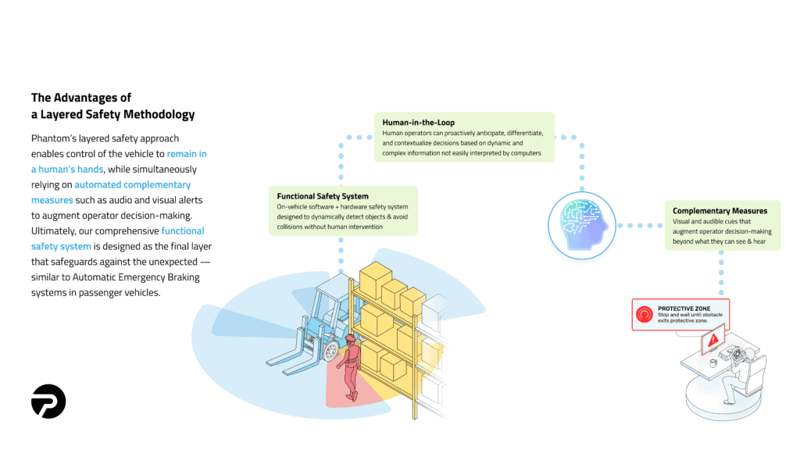
What is Phantom Auto’s layered safety methodology in logistics and how does it work?
David: Phantom Auto implements a layered approach to safety. We actually have three layers. The first layer of safety is a human one: A human driving the vehicle.
The remote operator is always in control of the vehicle—the human-in-the-loop. The remote operator has all the functionality that is available to an operator physically on the vehicle.
The second layer is an actual Functional Safety System and collision avoidance system that is designed per global industrial safety standards: ISO 13849-1, Performance Level D. It provides a level of warning and collision avoidance as well.
That safety system is designed for the physics of the vehicle itself. In other words, it takes into consideration the braking performance of the vehicle, the speed of the vehicle, and the direction the vehicle is moving.
It's very dynamic. The dynamic collision avoidance system is active at all times when the remote operator is in control of the vehicle. The on-board safety system will slow the vehicle when objects enter the warning fields. For example, If a person outside of the operator's view stepped in front of the vehicle and they didn't see them around a blind corner, that's where the system is adding that level of safety.
This Functional Safety System is also active during periods of high latency. In other words, in the rare case that we would lose communication between the operator station and the vehicle itself, like in a power outage for example, that safety system will still work completely independently. Phantom’s Functional Safety System doesn't rely on the communications between the operator and the vehicle itself.
The connection status and latency of the remote operator and the vehicle is continuously monitored. The system safely slows or stops the vehicle if the latency increases above acceptable thresholds.
The third layer would be what I'll say are typical additional awareness means such as a blue light, and the horn. This layer also includes a two-way communications device between the remote operators and the employees on the floor, as well as signaling devices including visual and audible indicators.
If we need to communicate with people on the floor, for example if they're doing something or working in the area of the vehicle that would be deemed unsafe, we can communicate with them that we're in the working area or that we're about to start. We can actually have a conversation with the person on the warehouse floor if need be, thanks to that two-way communication system.
How does removing the operator from the vehicle improve safety?
David: The majority of injuries that are related to industrial trucks are actually to the operator.
It could be rack product falling, other types of issues, or just simply getting on and off and those forklifts. It ends up being the operator that is at the highest risk, and we're reducing those risks by removing them from the vehicle.
When we start taking a look at mitigating risks that are associated with equipment, there is something that's called the hierarchy of risk mitigation. Our layered approach follows that same hierarchy that you’ll find in all of the globally accepted safety standards. With the human-in-the-loop, we’re actually taking the human driver off the vehicle, putting them behind a desk, and removing all the risks and hazards that would have been associated with that driver on-vehicle.
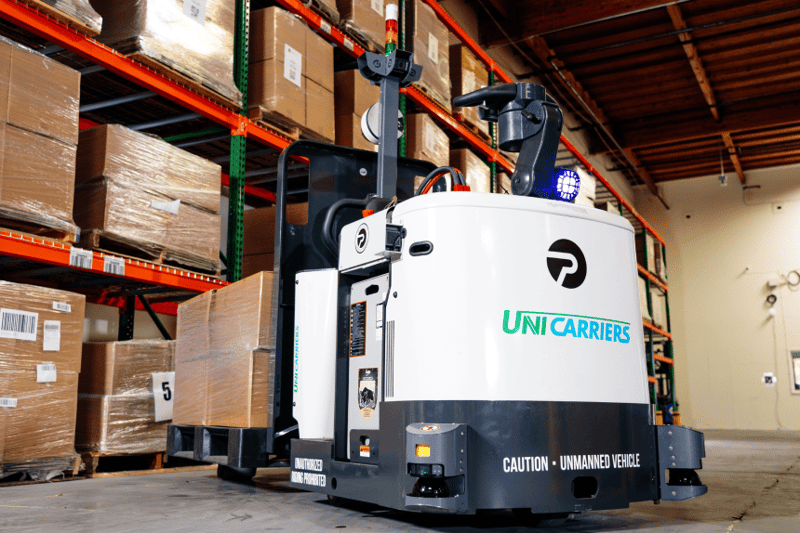
What standards does Phantom’s solution meet?
David: Currently there are no published industry sector safety standards that apply directly to remotely operated vehicles. With that in mind, Phantom Auto has applied globally accepted type A and type B safety standards (IEC 61508 and ISO 13849-1) for the design and implementation of the safety system and safety function design, and testing.
We also utilize ANSI B56.5, and ISO 3691-4 to inform our design where applicable. Phantom’s responsible approach to safety exceeds the requirements found in ANSI B56.5, and ISO 3691-4 for AGVs and other path-following vehicles.
Why is low latency so critical?
David: Latency is an extremely important thing. Connectivity and being able to share communications over wifi and/or over cellular gives us the opportunity to drive latency to a very low, very low level.
For remote operation, the connection that goes between the operator and the vehicle itself, that control pipeline has to be intact and have a very low latency.
However, there are going to be cases where for unknown or other reasons, sometimes related to the customer's infrastructure, latency may go up. We tolerate a small amount of latency while allowing undisrupted remote vehicle operation. For example, if we had a latency of approximately 500 milliseconds, which is a half a second, we would proactively slow the vehicle down without stopping it completely. We force the vehicle into a slower condition.
Then for argument's sake, say if we got up to a latency of approximately one second, we would actually bring the vehicle to a stop. This is because we have exceeded the threshold that the human brain can tolerate for safe and continuous remote operation.
What about cybersecurity? How does Phantom manage this?
David: We've gone through the process of certifying our technology evaluated to ISO 27001, 27002, and 27003 for IT security, and we've passed those tests with flying colors.
Any final thoughts?
David: Any technology such as remote operation that is designed appropriately, and intended to reduce risk, should be embraced. If proper training and education is carried out, the technology and automation will generally be widely accepted.
With Phantom’s layered safety methodology, we have a human in control of the vehicle, and complementary measures that become tools for them to do their job even more safely.
If safety systems are designed and implemented appropriately, and if you get to a point of having them designed extremely well, safety can actually promote efficiency by reducing downtime. And that’s what we’re doing at Phantom.
About Phantom Auto
Phantom Auto specializes in remote operation of all logistics vehicles. Phantom’s human-centric interoperable solutions enable people to remotely supervise, assist, and drive vehicle fleets from up to thousands of miles away – including forklifts and yard trucks. By decoupling labor from location, the company increases labor access and retention, safety, productivity, and resilience across the supply chain. With Phantom, supply chain operators can tap into drivers from anywhere—connecting people who want to work with jobs that need to be filled. The company’s proprietary software delivers secure, low-latency communication over volatile wireless networks for reliable sensor streaming and safe vehicle control. For more information about Phantom, visit www.phantomauto.com.


